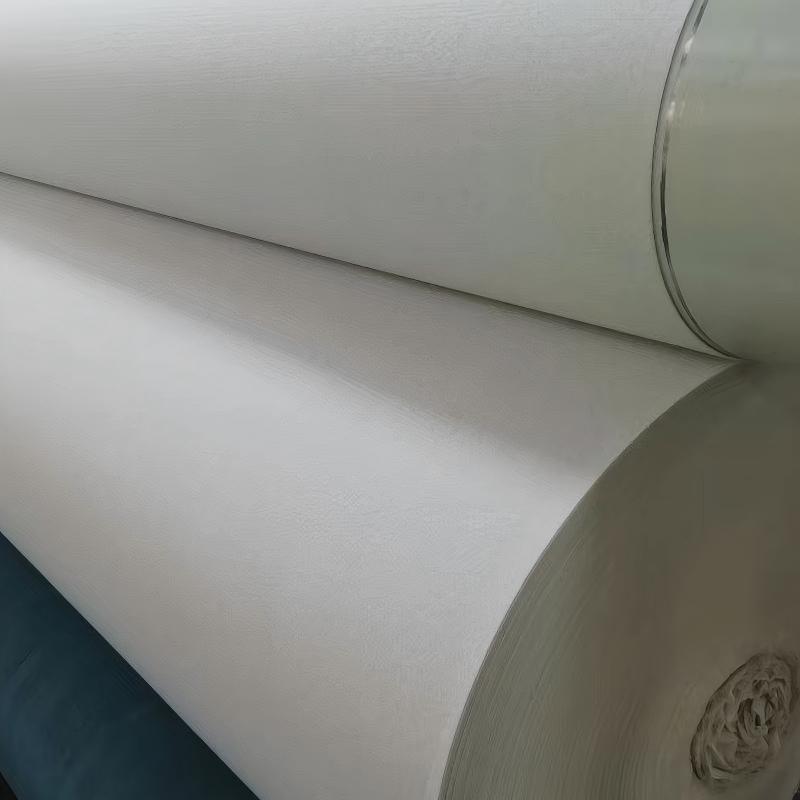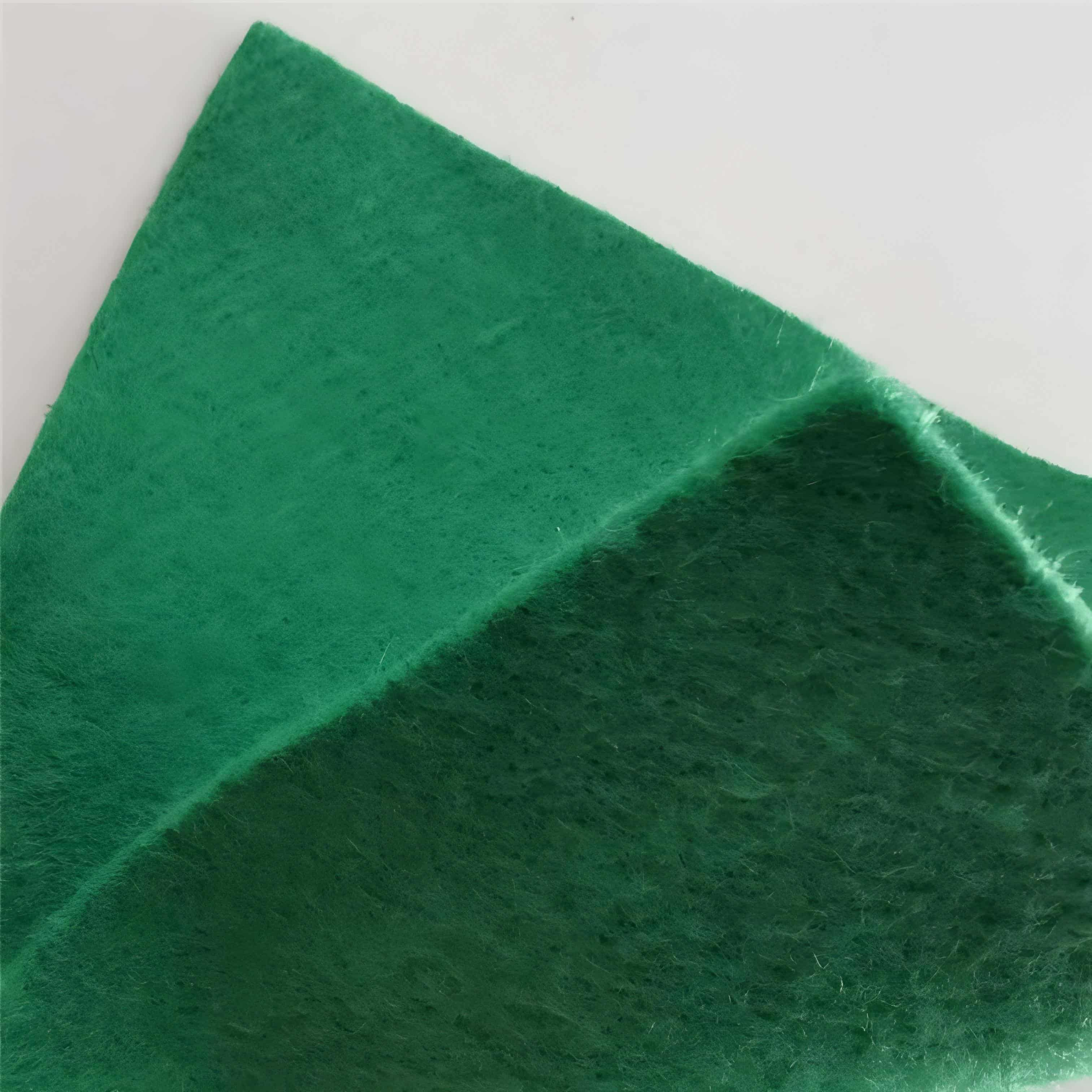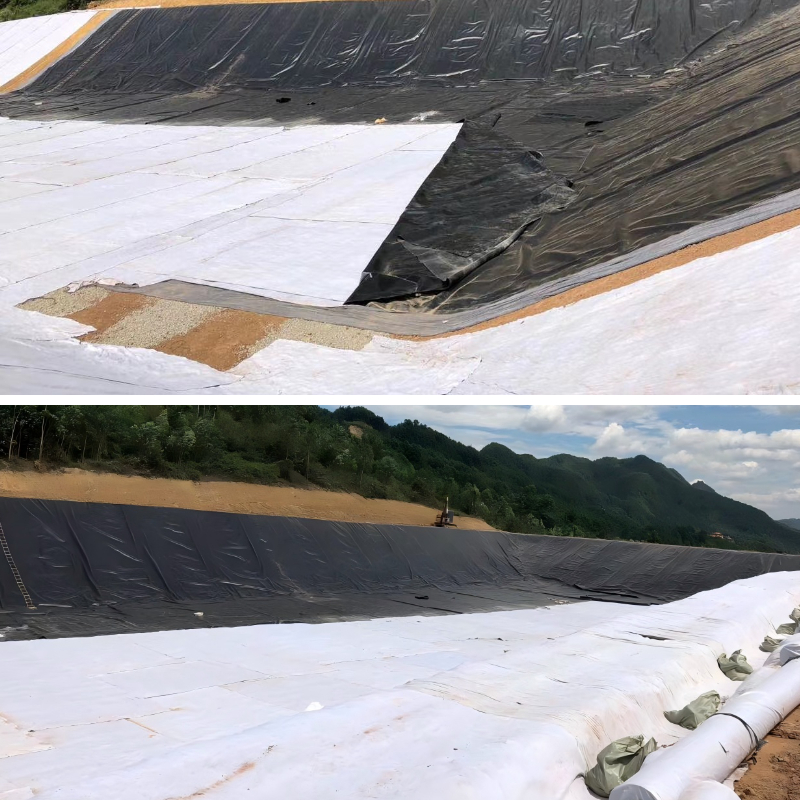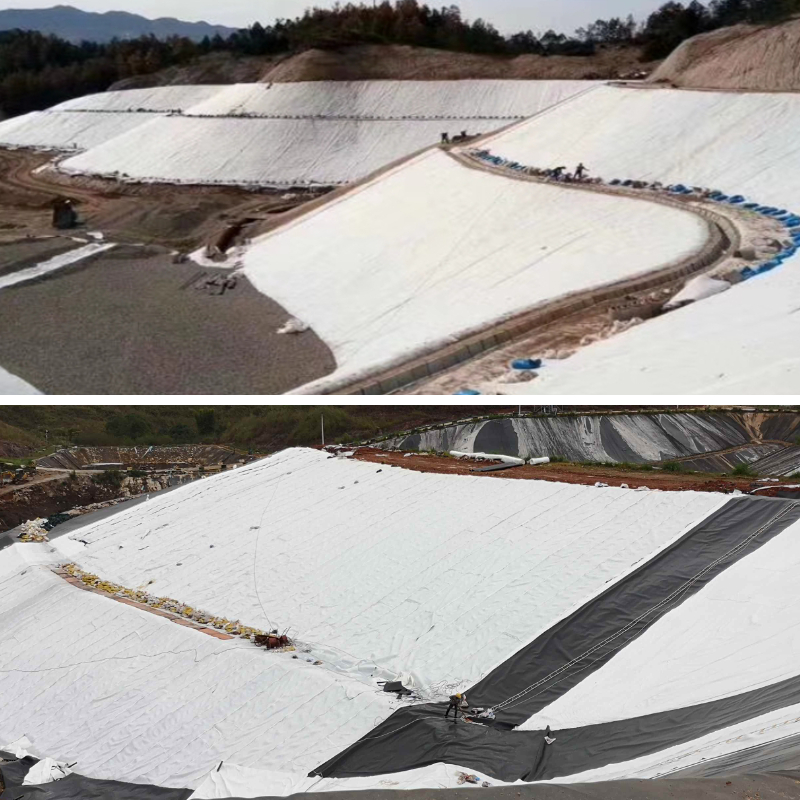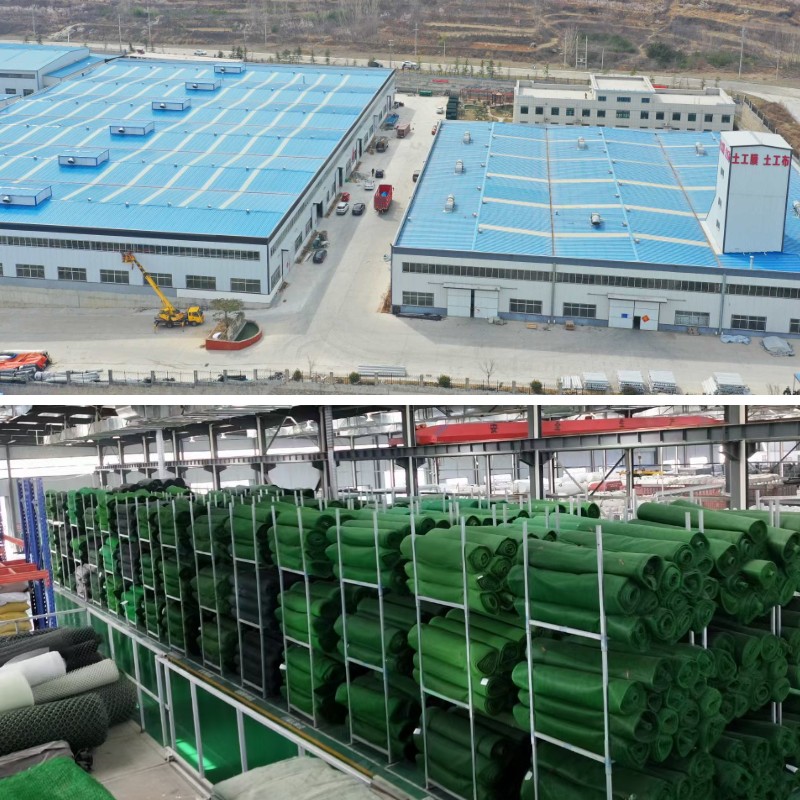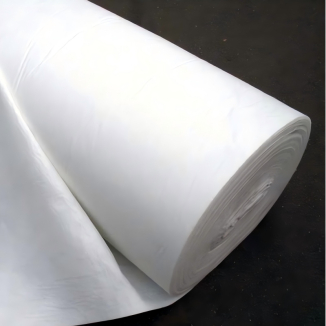Geotextile Fabric for Weed Control
1.High Strength: Stronger than ordinary materials, resistant to tearing and stretching, and retains deformation during construction.
2.Durability: Acid, alkali, and sun-resistant, it can be used 3-5 times longer than traditional fabrics and requires minimal maintenance.
3.Water-Permeable and Soil-Retaining: The holes drain water and retain soil, stabilizing the project and protecting the environment.
4.Easy to Install: Lightweight and flexible, easy to cut and lay, adaptable to complex terrain, and can be combined with other materials.
Product Introduction
I. Basic Properties
Geotextile Fabric for Weed Control are made from polyester (polyester) fibers and are formed through processes such as needle punching, knitting, or weaving. They are synthetic fiber geotextiles.
Physical Properties: Soft and lightweight under normal conditions, with evenly distributed pores on the fabric surface; resistant to deformation at room temperature, and stable basic tensile properties.
Chemical Properties: Resistant to acid and alkali corrosion (resistant to most soil chemicals), insoluble in common organic solvents, and somewhat resistant to microbial attack.
II. Core Functions
Structural Reinforcement: When laid in soil or roadbed, it distributes external loads, enhances soil shear resistance, and prevents roadbed settlement and slope collapse.
Drainage and Filtration: Utilizing its porous structure, it allows excess water to quickly penetrate and drain from the soil, while intercepting fine soil particles to prevent clogging drainage channels and maintain soil structural integrity.
Isolation and Protection: It provides isolation between different building materials (such as gravel and soil, geomembrane and soil), preventing material mixing and ensuring structural stability.
III. Main Features
Outstanding Durability: Highly resistant to UV aging (not prone to brittleness in outdoor use), with a service life of 10-20 years under normal operating conditions, far exceeding that of traditional cotton and linen geotextiles.
High Cost-Effectiveness: While the initial purchase cost is slightly higher than that of ordinary geotextiles, the long maintenance cycle and low replacement frequency result in lower long-term total costs.
Flexible Construction: Can be cut to any size according to project requirements, offering a high degree of conformity (suitable for tight installation on steep slopes and curved roads), and requiring no complex construction equipment, shortening construction time.
Product Parameters
project | metric | ||||||||||
Nominal strength/(kN/m) | |||||||||||
6 | 9 | 12 | 18 | 24 | 30 | 36 | 48 | 54 | |||
1 | Longitudinal and transverse tensile strength / (kN/m) ≥ | 6 | 9 | 12 | 18 | 24 | 30 | 36 | 48 | 54 | |
2 | Maximum elongation at maximum load in longitudinal and transverse directions/% | 30~80 | |||||||||
3 | CBR top penetration strength /kN ≥ | 0.9 | 1.6 | 1.9 | 2.9 | 3.9 | 5.3 | 6.4 | 7.9 | 8.5 | |
4 | Longitudinal and transverse tearing strength /kN | 0.15 | 0.22 | 0.29 | 0.43 | 0.57 | 0.71 | 0.83 | 1.1 | 1.25 | |
5 | Equivalent aperture O.90(O95)/mm | 0.05~0.30 | |||||||||
6 | Vertical permeability coefficient/(cm/s) | K× (10-¹~10-), where K=1.0~9.9 | |||||||||
7 | Width deviation rate /% ≥ | -0.5 | |||||||||
8 | Unit area mass deviation rate /% ≥ | -5 | |||||||||
9 | Thickness deviation rate /% ≥ | -10 | |||||||||
10 | Thickness coefficient of variation (CV)/% ≤ | 10 | |||||||||
11 | Dynamic perforation | Puncture hole diameter/mm ≤ | 37 | 33 | 27 | 20 | 17 | 14 | 11 | 9 | 7 |
12 | Longitudinal and transverse fracture strength (grab method)/kN ≥ | 0.3 | 0.5 | 0.7 | 1.1 | 1.4 | 1.9 | 2.4 | 3 | 3.5 | |
13 | Ultraviolet resistance (Xenon arc lamp method) | Longitudinal and transverse strength retention rate% ≥ | 70 | ||||||||
14 | Ultraviolet resistance (fluorescence UV lamp method) | Longitudinal and transverse strength retention rate% ≥ | 80 | ||||||||
Product Application
1. Transportation Engineering
Roadbed Reinforcement: Laid on the subgrade of highways and railways, it distributes the pressure of vehicle loads on the soil, enhances the subgrade's shear resistance, and reduces subgrade settlement and cracking. It is particularly suitable for roads with soft soil foundations.
Pavement Isolation: Sandwiched between the pavement base and subbase, it separates gravel and soil, preventing the mixing of different materials that could lead to a loosened pavement structure. It also assists in draining water from the base layer, extending the service life of the pavement.
Slope Protection: Laid on the slopes on both sides of the road, combined with vegetation, it stabilizes the slope soil, preventing rainwater erosion and landslides, and allows for drainage through the pores, preventing water accumulation from causing collapse.
2. Water Conservancy Engineering
Dyke Anti-seepage Assistance: Used in conjunction with geomembranes, laid on the inside of embankments, it acts as a protective layer for the anti-seepage layer, preventing the geomembrane from being punctured by sharp sand and gravel. It also drains water from within the embankment, reducing pore water pressure and enhancing embankment stability. River Management: Paved along riverbanks, it intercepts soil particles, preventing erosion and siltation while allowing water to permeate normally, maintaining a balanced ecological environment.
Drainage: Used as a filter layer in drainage ditches and blind drains, it coats the gravel drainage system, preventing soil particles from entering and blocking the drainage channels, ensuring long-term drainage system operation.
3. Environmental Protection and Municipal Engineering
Landfill: Paved at the bottom and perimeter of landfills, it serves as a filter and protective layer for the anti-seepage system, isolating landfill leachate from the soil, preventing groundwater contamination. It also assists in draining leachate and reducing internal landfill pressure.
Landscaping: Paved beneath flower beds and lawns in landscaped gardens, it isolates planting soil from the underlying soil, preventing soil compaction, draining away excess rainwater, preventing plant root rot, and suppressing weed growth.
Construction Pit Drainage: Paved around the perimeter of a construction pit, combined with drainage blind pipes, it quickly drains groundwater from the surrounding soil, lowering the water level during excavation and preventing pit collapse.
4. Agriculture and Ecological Engineering
Agricultural Water Conservancy: Lay it on the slopes of agricultural irrigation channels to prevent channel erosion and collapse, reduce soil loss, and filter impurities in the water to prevent irrigation pipe blockage.
Ecological Restoration: Lay it in mine reforestation and riverbank ecological belt construction to stabilize the soil in the restoration area, providing a stable base for plant growth while ensuring soil permeability and drainage, promoting ecological restoration.
Polyester geotextiles, with their core advantages of high strength, weather resistance, durability, and water permeability and soil retention, are widely applicable to engineering needs in various fields, including transportation, water conservancy, environmental protection, municipal administration, and agricultural ecology. Whether enhancing structural stability, preventing disaster risks, or balancing ecological protection and construction efficiency, they play a key role, becoming an important geotextile material for improving project quality and reducing long-term maintenance costs.


